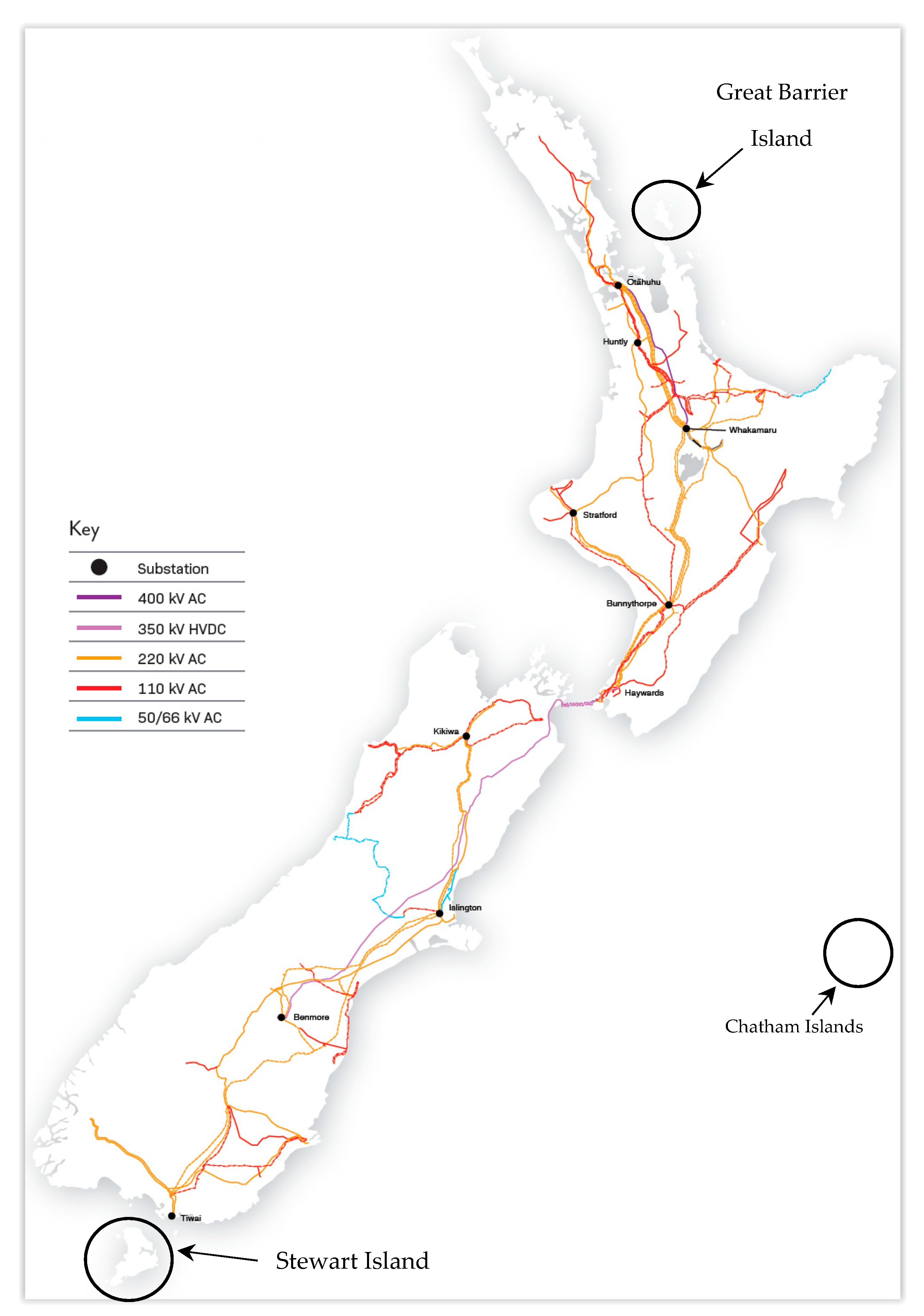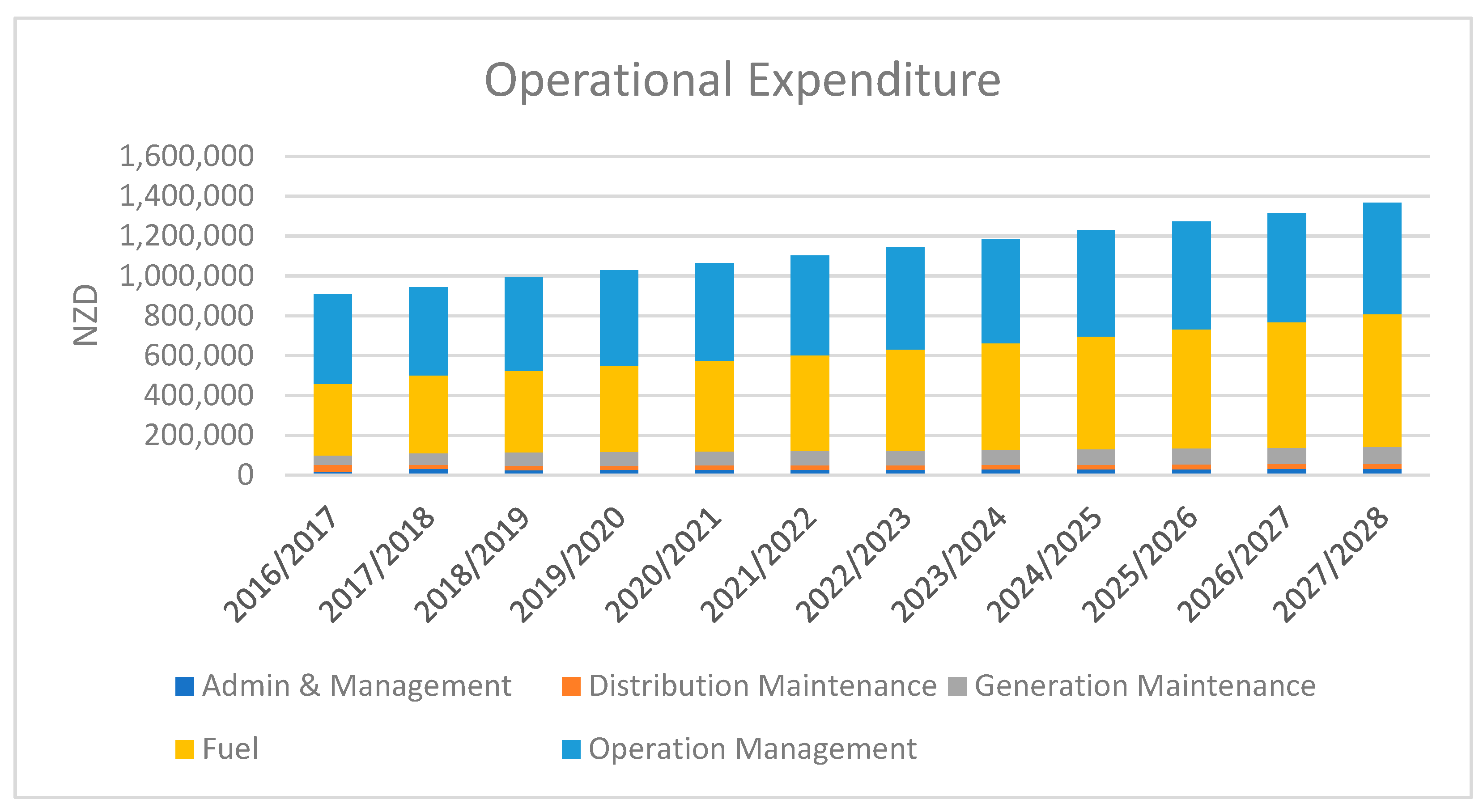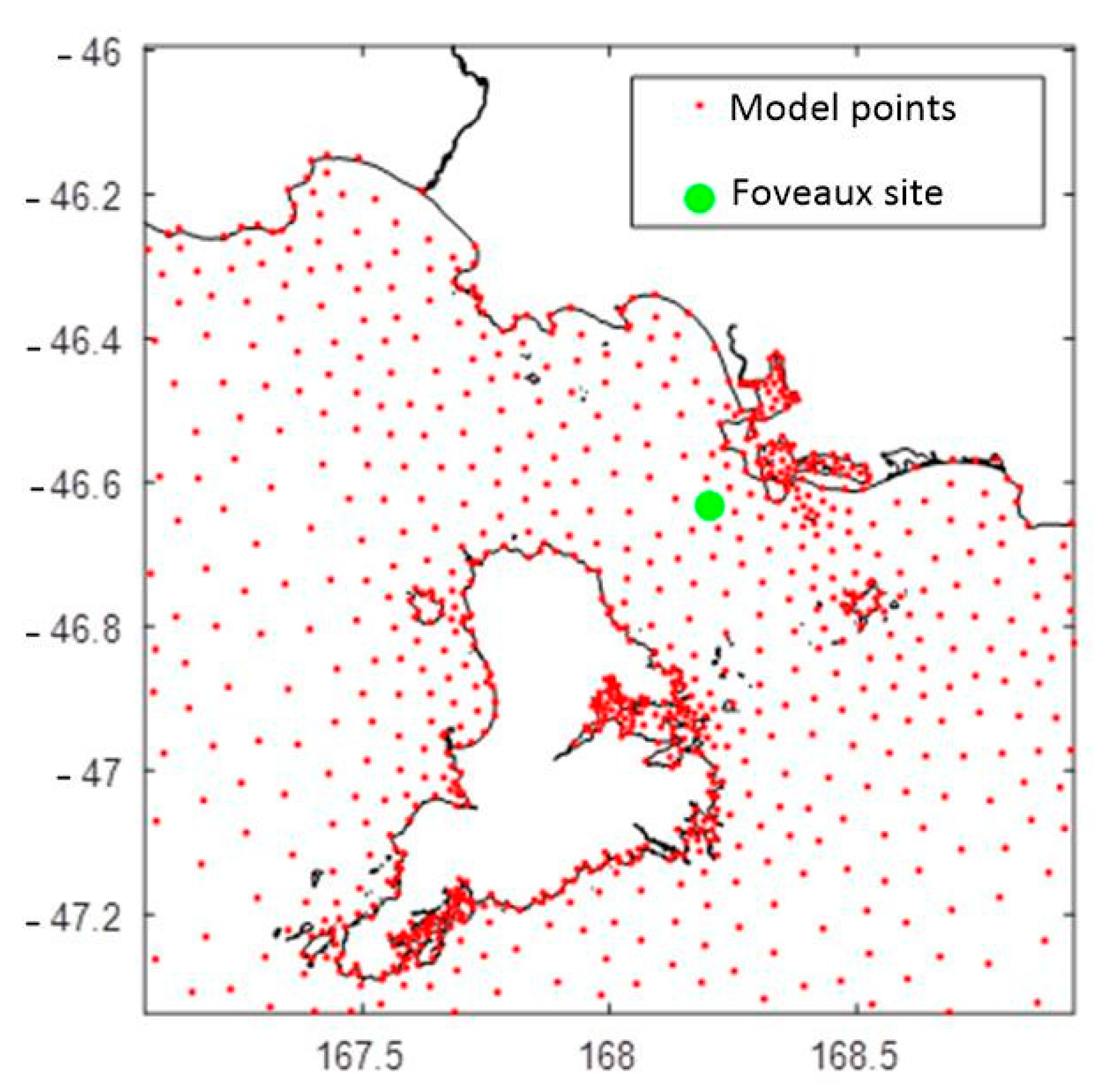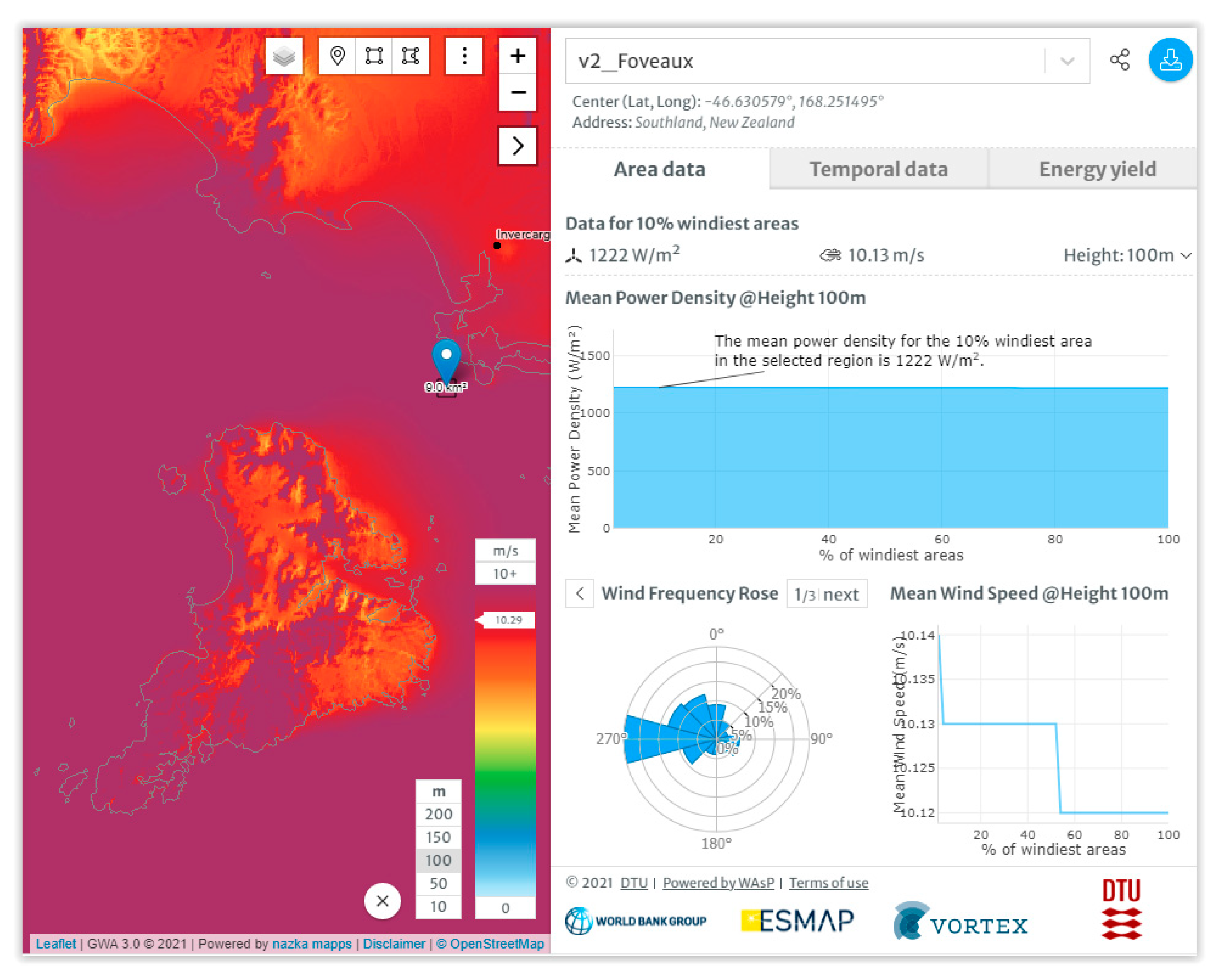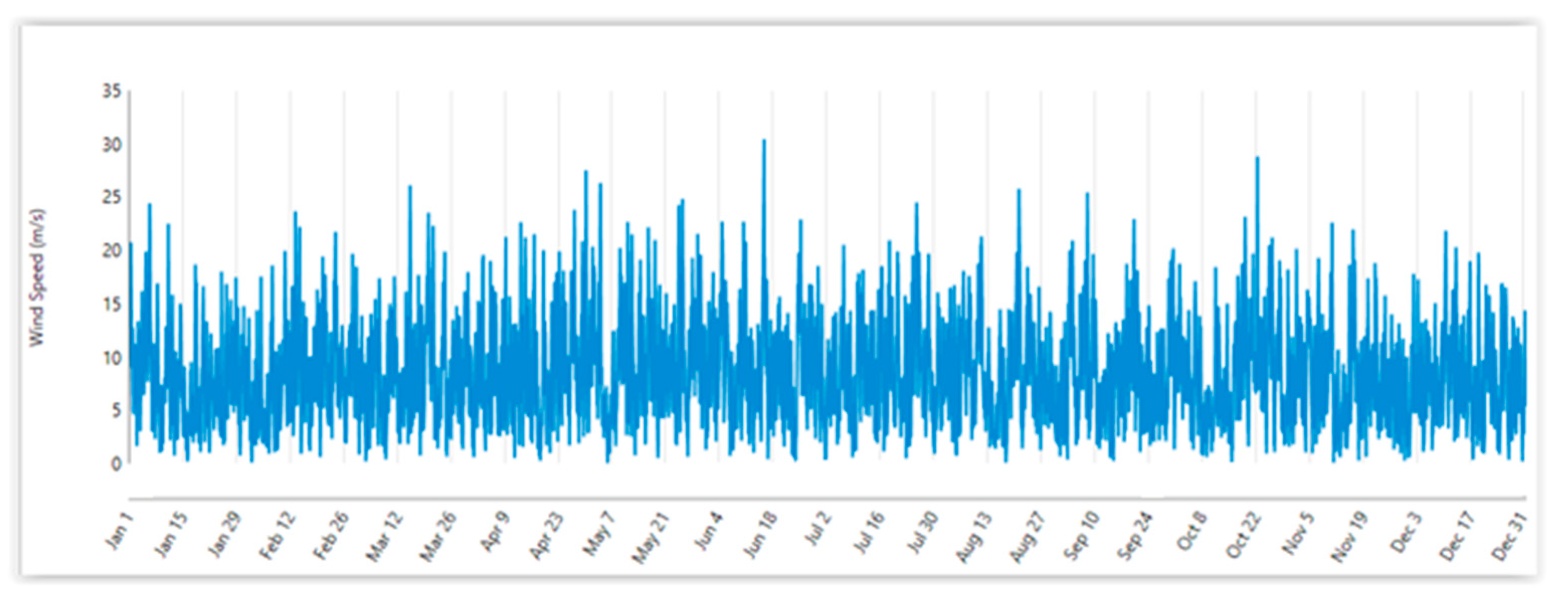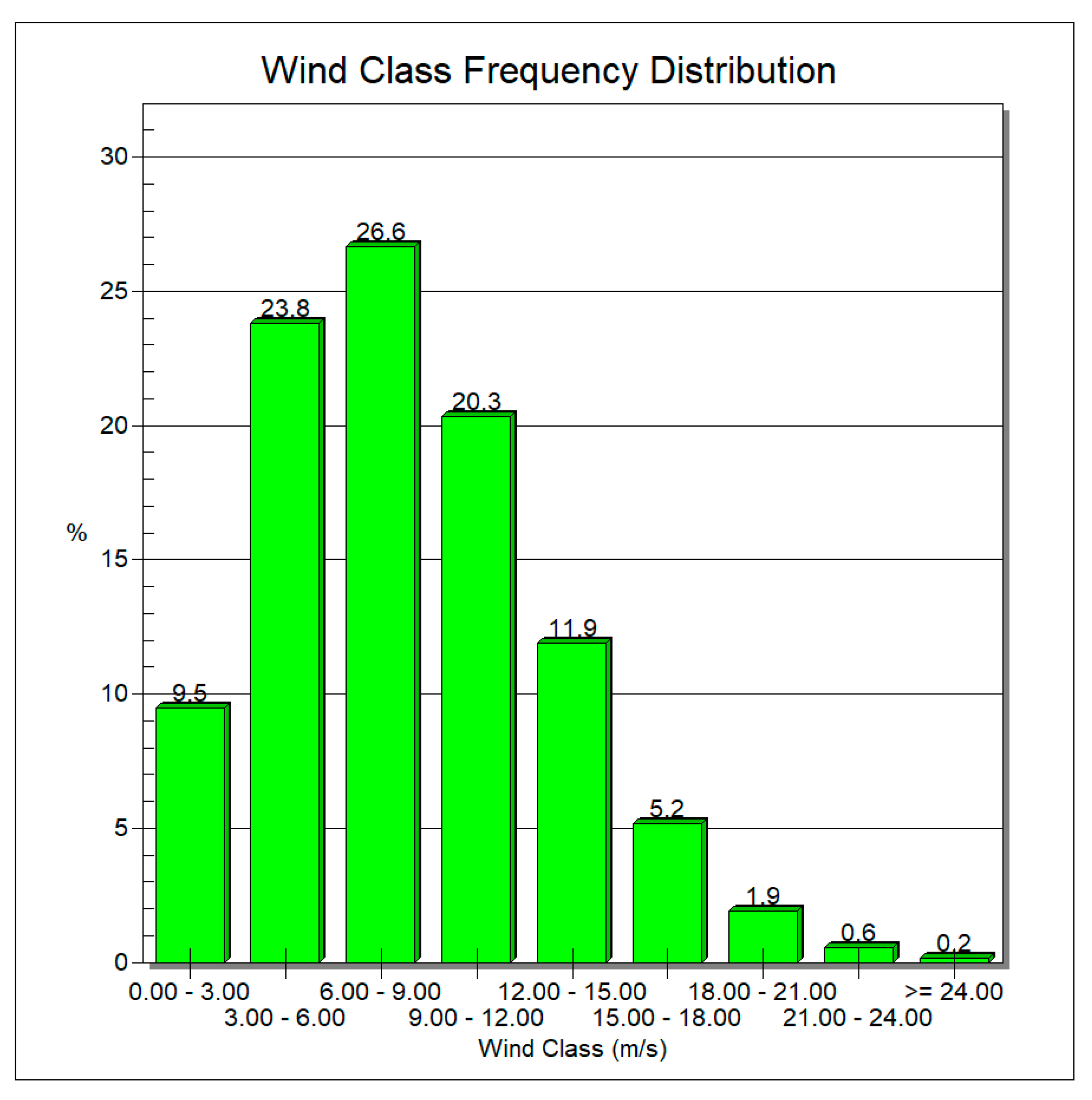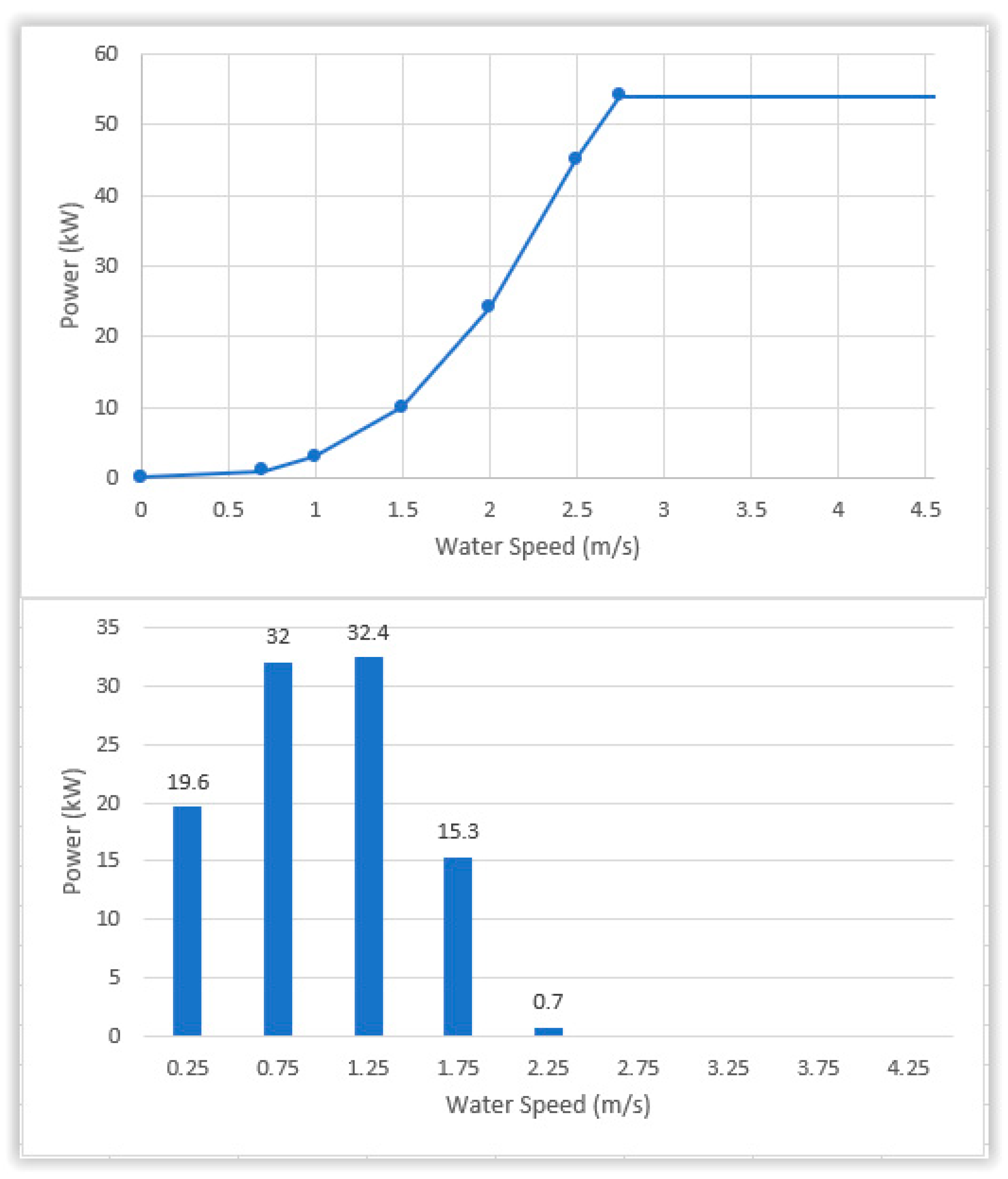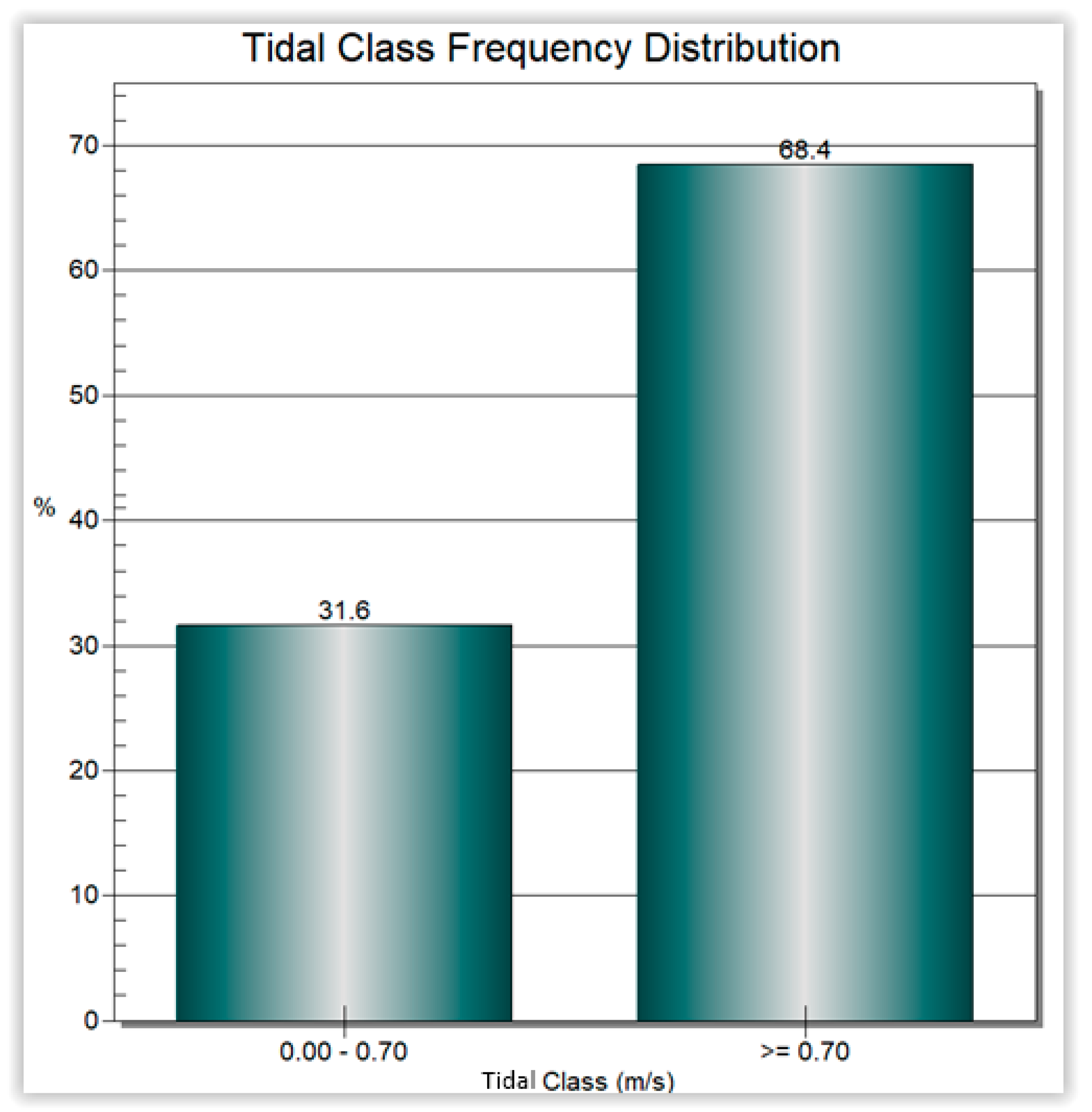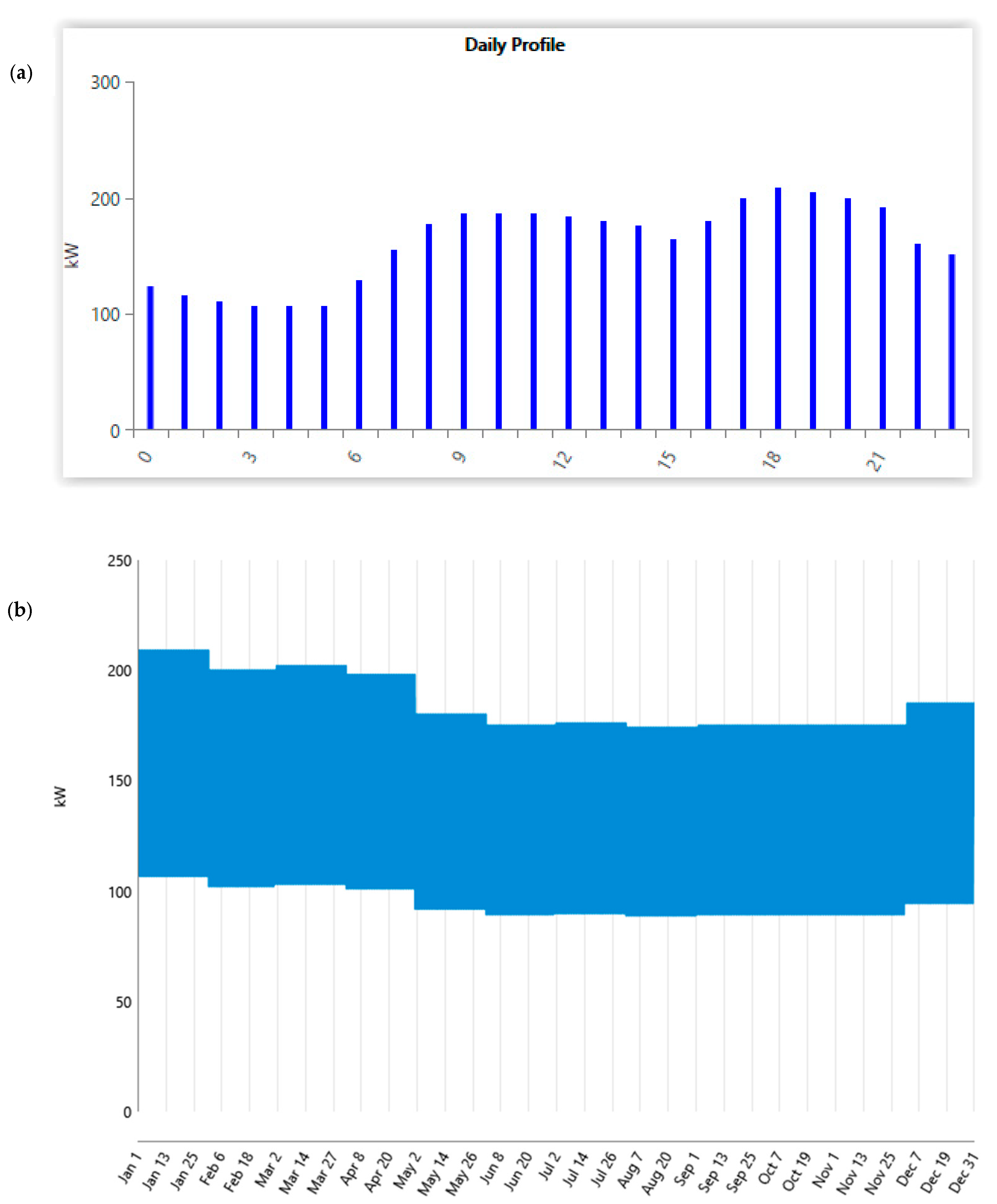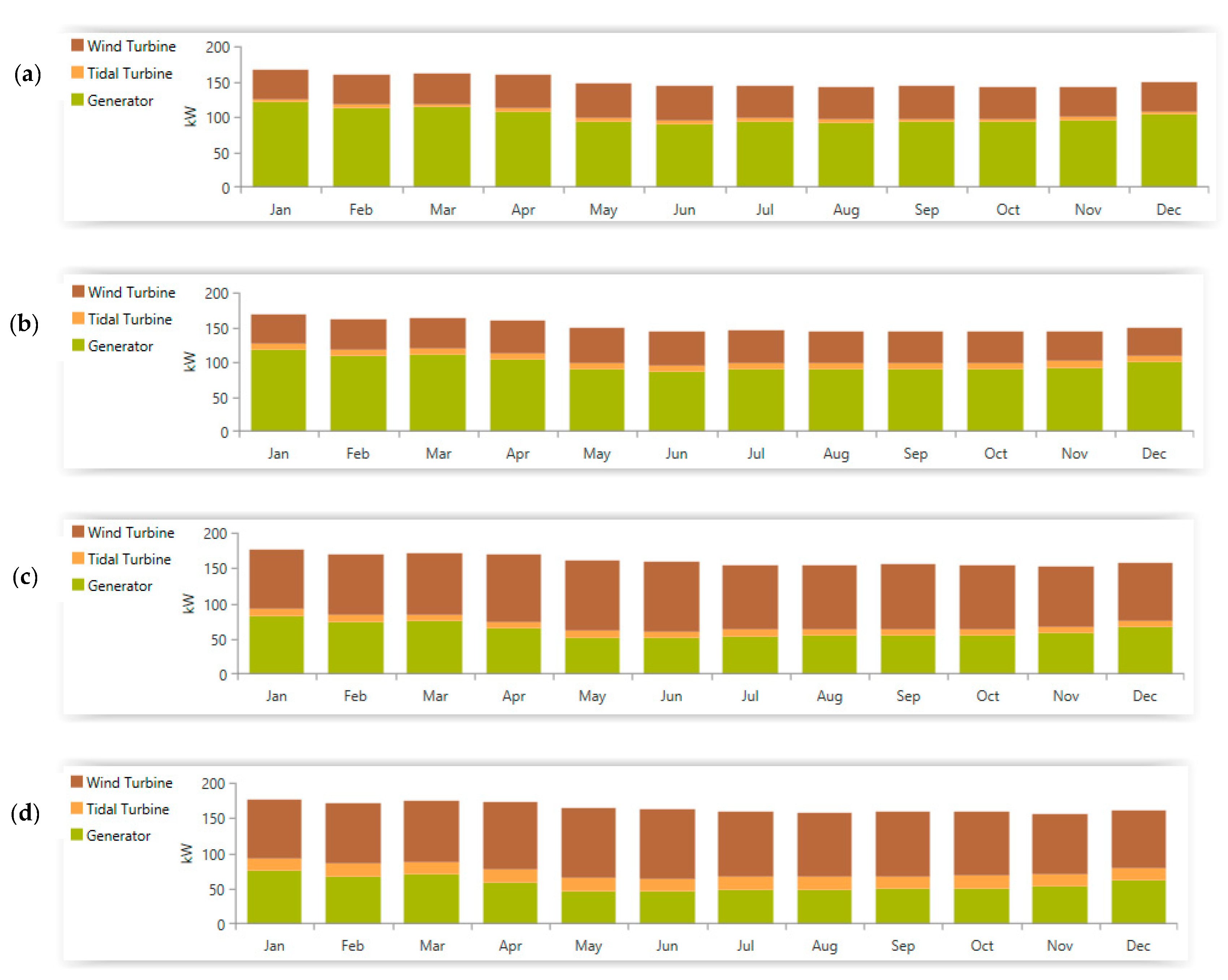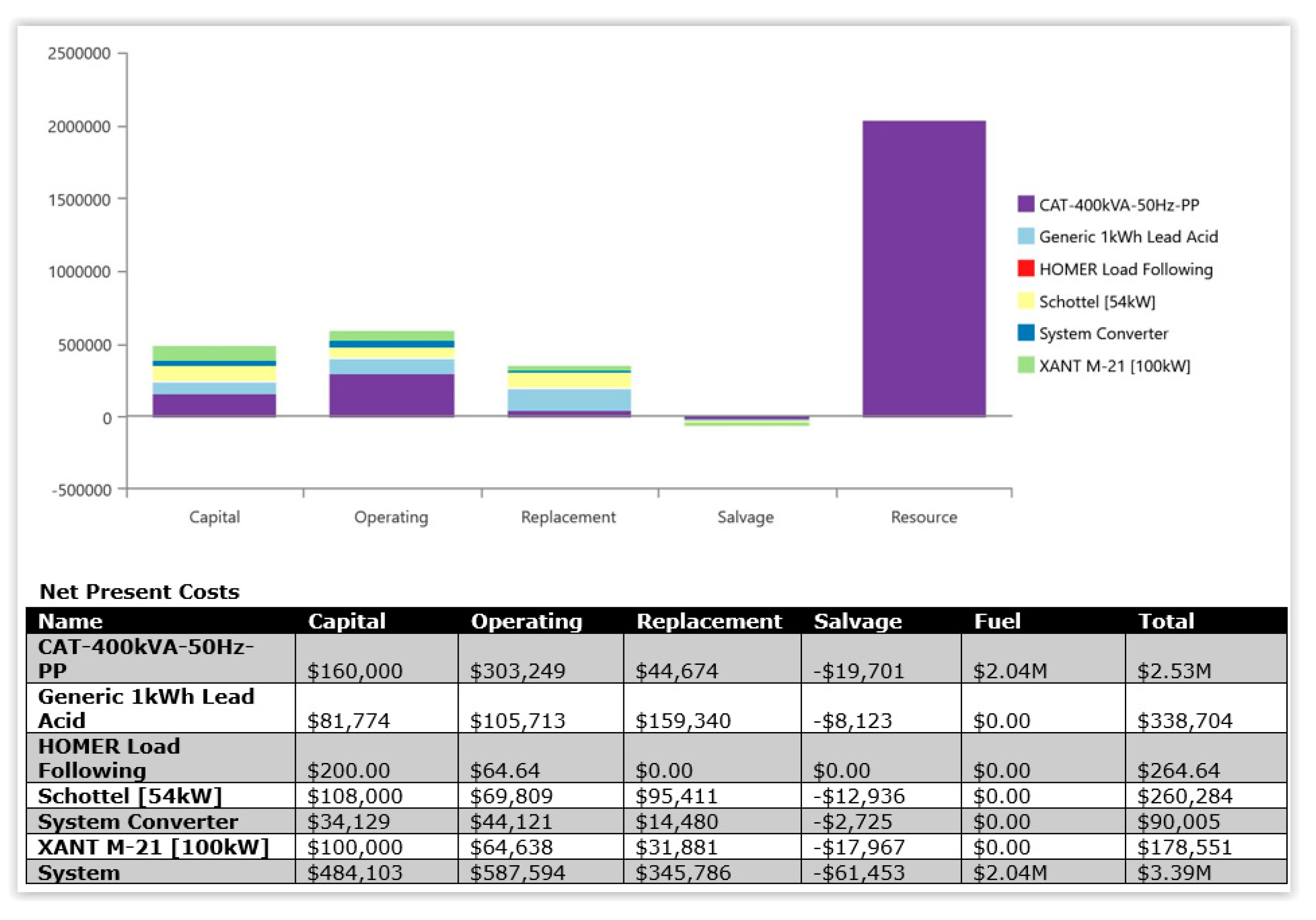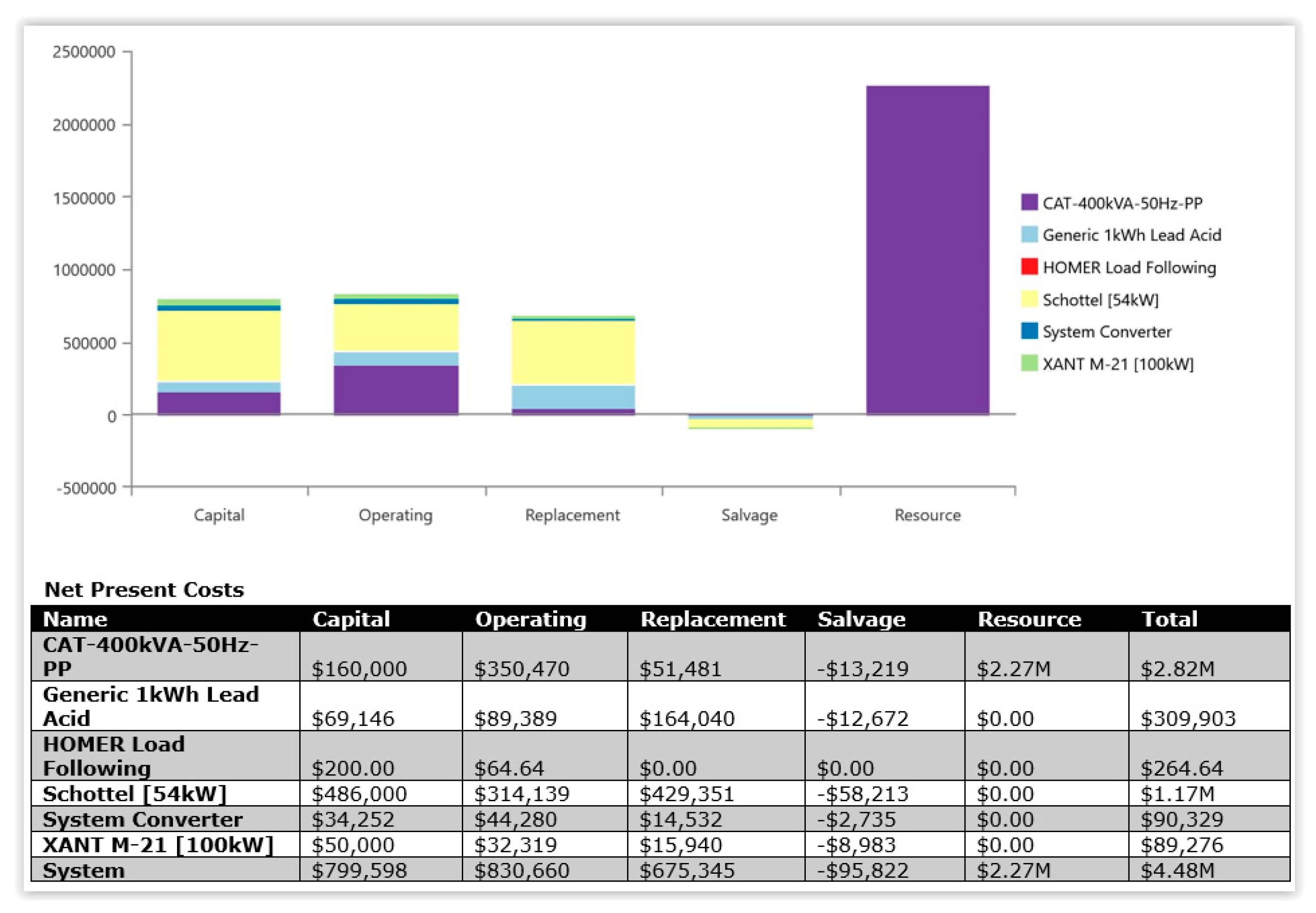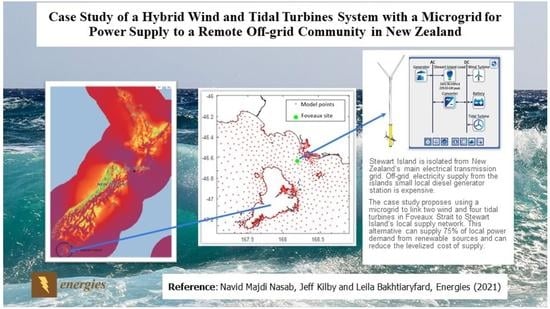In this section, different designs, in terms of required turbines at the selected Foveaux site for providing the electricity for the demand of Stewart Island, are compared.
By way of background, the SIESA load profile will be discussed first. The peak hourly load is 209 kW. HOMER software (as explained in
Section 2.5 and
Section 2.6) is used to plot the average hourly and monthly load, as shown in
Figure 12. The left graph shows that the average daily load fluctuates between 106 and 209 kW. The right graph shows the load for different months of the year. The minimum load fluctuates between 88 and 174 kW in August, and the maximum load fluctuates between 106 and 209 kW in January. The daily demand for the year averages 3452.9 kWh/d, with a load factor of 0.69. The total demand is 1,260,332 kWh/year.
In view of what
Figure 14 shows,
Section 3.1 and
Section 3.2 evaluate different designs, using HOMER software (
Section 2.5 and
Section 2.6) to optimize turbine and generator operation, so as to meet the fluctuations in demand through the year. The scenarios, in terms of the number of wind (W) and tidal (T) turbines and diesel generators (G), are 1W + 1T, 1W + 2T, 2W + 2T, 2W + 4T and 1W + 10T.
Section 3.3 and
Section 3.4 discuss the results, in terms of power generation and cost-effectiveness, respectively.
3.2. Financial Analysis Results
Table 8 is a summary of financial analyses for different scenarios at the Foveaux site.
The 2W + 2T and 2W + 4T scenarios seem more economic to install and operate. To show why,
Table 9 depicts the optimization results for each scenario. Their renewable fractions are 30.2%, 32.5%, 57.1% and 61.1%, respectively. A renewable fraction of 61.1% means that 61.1% of the electricity is supplied from the wind and tidal turbines, and the rest of it from the diesel generator. Hybrid systems with a renewable fraction of more than 66% are high revenue. [
27]. The scenarios 2W + 2T and 2W + 4T almost meet this criterion. They have a lower operating cost, fuel cost, and NPC than 1W + 1T or 1W + 2T. Most importantly, they have a lower COE.
Figure 17 show the scenario with the lowest costs at the Foveaux site, and the net present cost of each component in the system and the system as a whole. The capital, operating, replacement, and salvage costs are small. The main costs are fuel for the generator and initial construction (no provision to enter it in HOMER’s financial analysis module).
Table 10 depicts the optimization results for a possible alternative scenario that can balance wind and tidal generation, 1W + 10T, which has a renewable fraction of 52.7%. However, the capital cost, operating cost, and NPC are higher than 2W + 2T or 2W + 4T. The COE also becomes higher.
The reason why is shown in
Figure 18. Adding more tidal turbines increases the whole-system capital, operating, replacement, and salvage costs. However, it does not reduce the whole-system fuel cost, and the scenario adds to whole-system construction cost (more floating platforms and cables for tidal turbines).
3.3. Discussion of Power Generation Results
Table 11 shows the mean output power for all the scenarios. Stewart Island’s mean power demand is 143.9 kW. All the scenarios can meet the mean demand. Only 2W + 2T’s and 2W + 4T ’s mean output exceeds the peak demand (209 kW).
Table 12 shows the percentage of electricity produced by the wind and tidal turbines. Stewart Island ’s total power demand is 1,260,332 kWh/year. The scenario 2W + 4T produces the highest renewable energy fraction, and could contribute 75% of the power demand.
Table 13 shows the amount of pollutants and fuel consumed. The scenario 2W + 4T is the most environmentally friendly scenario.
Comparing different designs shows that that 2W + 4T is an optimized hybrid design, which can provide the electricity demand of Stewart Island by using wind, tidal and diesel sources to cover each other during periods when one or another source cannot generate. Further, 2W + 4T’s mean output is the highest at 90.5 kW, it can meet the peak load (209 kW), and it can supply 75.3% of Stewart Island’s total demand.
In comparison with the optimum scenario, 2W + 2T’s mean output is almost as high, and it can also meet the peak load. Its renewable component can still supply 69.1% of the total demand. However, 2W + 2T’s diesel consumption is somewhat higher than the optimum scenario, so are its greenhouse gas emissions. The scenarios 1W + 1T and 1W + 2T have a lower mean output, their renewable output cannot meet the peak load, and meet less than 40%. The fuel consumption and emission of pollutants are much higher than other scenarios.
The scenario 1W + 10T can balance wind and tidal power generation. The renewable components can supply 62.5% of the demand. Although less than 69.1% from 2W + 2T and 75.3% from 2W + 4T, this is still a satisfactory renewable fraction.
3.4. Discussion of Financial Analysis Results
In this section, the scenarios are compared, based on the financial analysis results from
Section 3.2, which are summarized in
Table 14.
Capital equipment: The cost is the least for scenarios 1W + 1T and 1W + 2T, but these scenarios do not generate much power from renewable sources. The scenarios that can (2W + 2T, 2W + 4T, 1W + 10T), require higher initial expenditure on equipment purchase;
Replacement: The cost to replace equipment (at the end of design life) is consequently the least for the scenarios that do not generate much renewable power, and is higher for the scenarios that can;
Construction: The cost of project installations is not shown, because HOMER Pro’s financial analysis module does not include this. (It just compares equipment, operating and resource costs).
Removal/re-instatement: The cost to remove or re-instate project installations (at the end of design life) is not shown, for the same reason;
Operation: The cost is the least for two scenarios (2W + 2T, 2W + 4T), which generate much power from few turbines. The operating cost for 1W + 10T is greater, because this scenario has numerous turbines. The operating cost is most expensive for the scenarios that do not generate much power from renewable sources. The reason is that the diesel generator (which has a high operating cost) starts up often and runs longer.
Resource: The cost is the least for scenarios that generate much power from wind and tidal turbines (2W + 2T, 2W + 4T, 1W + 10T). The reasons are, firstly, there is no resource cost for wind or tide. Secondly, fuel purchase for the diesel generator is reduced by up to 60%.
The total net present cost of the project (NPC) is the least for 2W + 2T, because this scenario has low equipment and operating costs, and generates much power (62%) from renewable sources, so does not incur a high resource cost. The NPC is almost the same for 2W + 4T, which can generate a greater percentage of power (66%) from renewable sources. However, 1W + 10T, which can still generate much renewable power (57%), is almost as costly as the scenarios that do not, because it requires more expenditure on equipment purchase and operation.
Total cost of energy: The COE is the least for 2W + 2T and almost the same for 2W + 4T, when their NPCs are levelized (per kWh over the life of the project). However, the COE for 1W + 10T, despite its high renewable percentage, is almost as great as the scenarios that do not, once the NPCs of all three are levelized for the purpose of comparison.
The 2W + 4T scenario is optimal for power generation, because it produces the highest renewable fraction (66%), while the RF for 2W + 2T is 62%. Its total NPC seems affordable at 3.47 million dollars. Its levelized cost at 21 c/kWh appears better than the present scenario (5D = 0.23 c/kWh).
A possible alternative scenario, 1W + 10T, would equalize generation from wind and tidal at 28% each, providing a balance of renewable sources. However, its total NPC is considerably higher at 4.48 million dollars, and the levelized cost is also higher at 27 c/kWh.
A problem with HOMER Pro ‘s financial analysis is that it just evaluates equipment, operating and resource costs, when calculating the NPC and COE. A realistic comparison of NPC and COE should include construction and installation costs, particularly offshore platforms, marine cables, and a DC–AC shore converter station.
